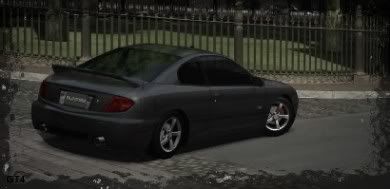How To: Racing seat brackets
Sorry if this post gives anyone deja vu. I originally discussed this bracket design in my thread about my new seats in the Photo forum, but I figured more people who need this info could find it here. Instructions here are as they relate to my Yonaka Samurai racing seats, and may differ slightly for other products.
I spent most of this past Sunday getting getting one seat installed, and hopefully the second will go a bit more smoothly. I used
this how-to for reference in making seat mounting brackets, but decided to go a little different direction. Thanks to Shifted for sharing his method. Here's how my attempt went: (The older set of hands in the brown overalls are my father's. I owe him a few beers for helping me muddle through this project.)
Supplies:
- 17" x 48" metal plate. Not sure how thin it could safely be, but 0.25" thick is plenty.
- Sheet of plywood. Amount required depends on how lucky you are.
- Eight 1.5" long bolts. I believe the ones I used were 3/8" diameter. Matching washers and lock nuts. Makes sure you get ones strong enough that you would trust them.
- Eight 1" spacers that will accomodate your bolts. Mine were 1.5" diameter to fully support the seat rail.
Tools:
- Sawzall w/ metal cutting blade
- Some clamps
- Drill, preferably a drill press
Sorry if this list isn't perfectly specific. I was making this up as I went along.
I went to my local steel and metal dealer, and was fortunate to find the had a leftover "cutting" of 0.25-inch aluminum plate, 17" wide by 48" long. This metal set me back about $85. It was exactly wide enough for the brackets, and long enough to make two of them with a bit of leeway. This is what one piece looked like cutting in half:

Of course, the old seat comes out. Stud locations and the vent are revealed.

Use a piece of plywood to cut a rough template. A hole is cut in the middle to allow the vent, and the inside edge is trimmed to hug the console. Once a decent fit is achieved, rap the wood over each stud with a mallet to mark the stud locations. Drill these holes, and set the template in place over the studs. Put the seat on top, and be sure that it will allow you to mount your seat where you want. I wanted some extra legroom, so mine has a bit of extra overhang at the back.

Trace the wooden template onto the metal plate with a marker, and cut out the edges with a sawzall.

Clamp the wood template and metal bracket together.

Using the holes in the template as guides, drill the mounting holes in the bracket.

Check fitment.

At this point, I placed the seat on the bracket and decided on it's final location. I marked the location of the seat sliders and their mounting holes. Back to the drill press one more time to make those holes.
Now -- for a bit of explanation. I had originally intended to make a "flat" bracket that would bolt down seamlessly. This was before I hit a snag: the seat sliders sit between the rear seat studs
snugly with
no room to spare, not even enough to put a nut back on the studs without interference. After considering the options, I decided the least annoying solution was to use spacers to hold the sliders up just enough to install the nuts underneath. This upset my vision of a "low" seat mount slightly, but I can cope.
From what I had available, I settled on cut sections of steel tubing. What I really wanted were solid tubing pieces with a bolt hole drilled in the center (essentially really thick washers), but these would do until I could get proper spacers. The risk is that they will vibrate off center, but I decided that they couldn't move far enough to cause problems.

Some high-strength bolts, with a large washer at the rail to prevent bending, and locking nuts.

Obviously off center. It's in the middle of the rail, but the front-to-back position is out. This is why I still plan to replace this with proper drilled spacers.

All four in place.

Put in the car, and bolt it down.

A bit of visible overhang. I may trim off some excess, now that I see how much is visible. Or at lease paint or polish it. Or anodize it.


Once again, some extra material at the back. I was playing it safe to for mounting the seat back far enough. I'll have to trim this to keep any rear passengers from catching their toes. It isn't quite a bad as it looks, since I have the see fully forward or back this this shots.

One down. One to go.


It'll probably be next weekend before I get a chance to do the other one. Hope that helps someone looking for a little different approach to fabricating seat brackets. Comments welcome.

Edited 3 time(s). Last edited Monday, March 12, 2007 12:34 PM

Shop Manuals, Brochures:
www.kenmcgeeautobooks.com





























plenty of support at 1/4" thick













